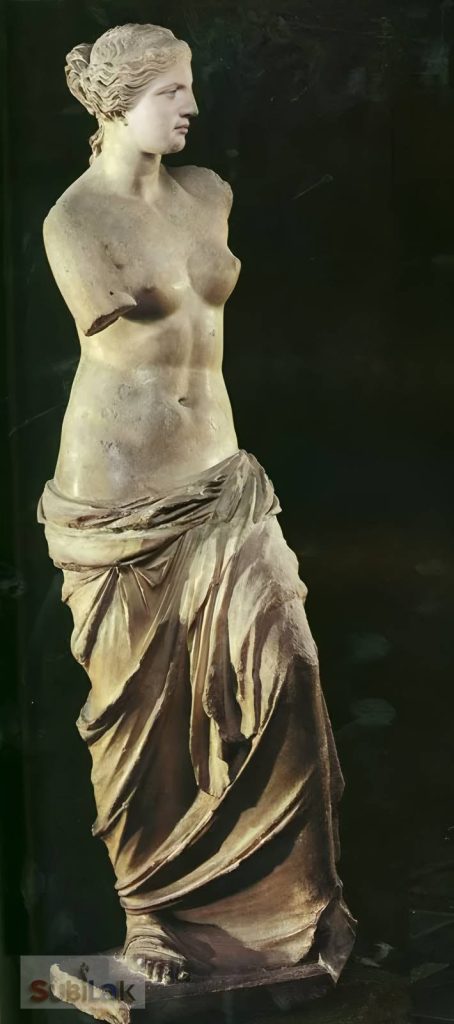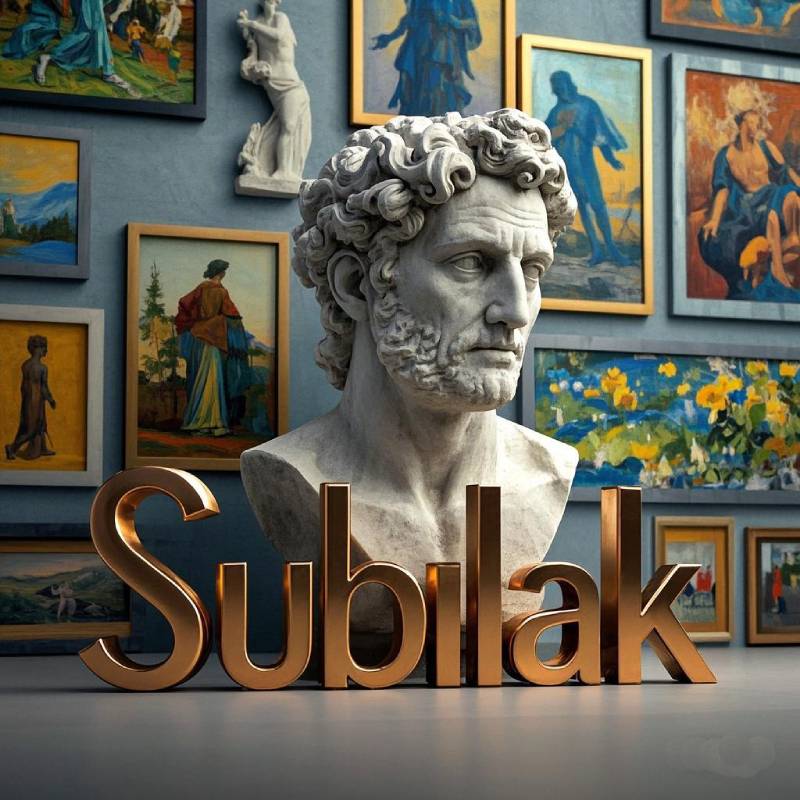
Venus de Milo is the pinnacle of ancient Greek sculpture art and an iconic symbol of Western classical aesthetics. Its artistic value lies not only in the perfection of its form, but also in its condensed cultural concepts and philosophical thinking. The following analyzes its deep connection with Western aesthetic art from multiple dimensions:
I. The embodiment of classical aesthetics
- Idealized human body proportions
Venus’ body proportions follow the ancient Greek “golden ratio” principle (such as the head-to-body ratio of 1:8), with soft but full of vitality, showing balance and harmony. This “mathematical beauty” stems from the Pythagorean school’s belief in the order of the universe – the human body is a microcosm, and the perfect proportion symbolizes the unity of divinity and rationality.
- S-curve and dynamic balance
The statue breaks the symmetry by subtly twisting the body (Contrapposto posture), with the right leg bearing the weight and the left knee slightly bent, forming an elegant S-curve. This dynamic balance not only reflects the natural movement of the human body, but also implies Heraclitus’ philosophy of “unity of opposites” – movement is contained in stillness, and rationality and sensibility coexist.
- The fusion of divinity and humanity
Venus’s facial expression is calm and detached (the “noble simplicity” of classicism), while her naked upper body and falling folds suggest sensual beauty. This contradiction reflects the ancient Greek concept of “human and divine isomorphism”: beauty is both sacred and perceptible. - The paradox and acceptance of incomplete beauty
- The openness of “unfinished”
The missing arms of the statue have become its symbol. German aesthetician Lessing proposed in “Laocoon” that art should inspire imagination rather than exhaust reality. Venus’s incompleteness forces the viewer to actively fill in the blanks and form “infinite possible perfection” – this is the reinterpretation of classicism by romanticism. - Metaphor of modernity
When Venus was discovered in the 19th century, Europe was experiencing the industrial revolution and the crisis of rationality. Its incompleteness is seen as a question of “perfection”, which fits the existentialist thinking about fragmentation and contingency. Sartre once said: “The missing arms are the proof of existence.” - The evolution of cultural symbols
- Maternal worship and power symbol
The prototype of Venus is Aphrodite (the goddess of love and beauty), but its solemn posture is closer to the goddess of fertility. After being suppressed by Christianity in the Middle Ages, it was reinterpreted as a symbol of “human awakening” during the Renaissance. Napoleon once looted it to the Louvre as a symbol of imperial glory.
- Feminist controversy
Modern criticism points out that Venus is objectified as an object of male gaze. But the strength of its muscle lines and autonomous posture (such as refusing to be bound by clothes) are also interpreted as a potential expression of female power.
IV. The embodiment of technological philosophy
- The “fleshification” of marble
The sculptor uses the superb “drapery” method to make the hard marble present the texture of fabric drape, and the contrast between folds and skin strengthens the temperature of the flesh. This conquest of materials echoes Aristotle’s metaphysics of “form giving essence to matter”. - Theatricality of light and shadow
The shadow changes of the statue under different lights are like a dramatic “moment freeze”. This implies the exploration of “temporality” in Hellenistic art – beauty is not static, but a glimpse of the dynamic process.
Conclusion: Eternal Aesthetic Dialogue
The reason why Venus de Milo has become a totem of Western aesthetics is that it is both a complete embodiment of the classical order and open to the future because of its incompleteness. It has been constantly reinterpreted in different eras. From the rational worship of the Enlightenment to the fragmented narrative of postmodernism, Venus has always been a mirror reflecting the eternal questioning of human beings about “beauty”. As Heidegger said, “The essence of art is the self-introduction of truth into the work.” The charm of Venus lies in the fact that it refuses to be defined, but always inspires definition.

